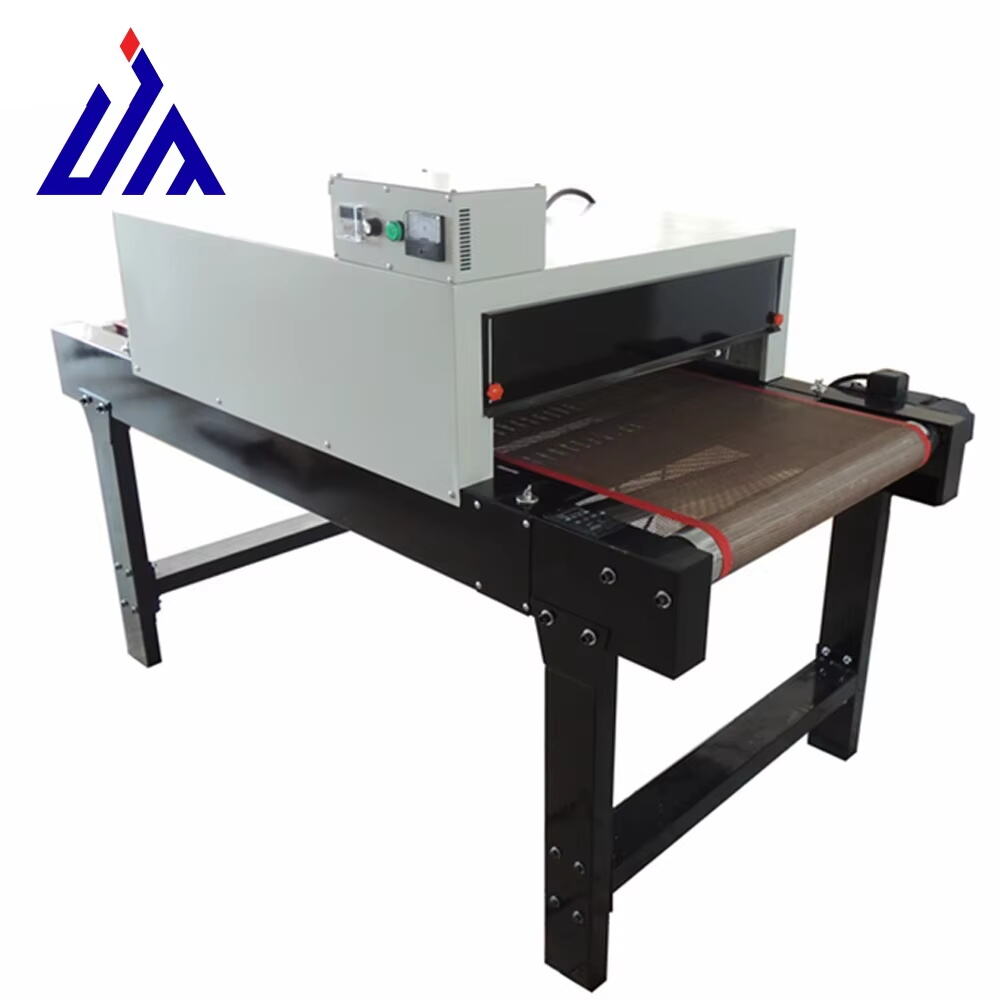Introduction to Industrial Drying Methods
Industrial drying remains essential throughout manufacturing sectors as it removes unwanted moisture to boost product quality and stability. Most production lines simply cannot function properly without this basic step, since too much moisture can ruin both how long products last and whether they work as intended. Different industries rely on various drying techniques depending on what they're working with and what results they need. Take tunnel dryers and flash dryers for example these have become go-to solutions when dealing with big batches of material that need quick, even drying. Good drying systems cut down on moisture levels before materials start to degrade, which keeps products intact and makes them attractive to buyers. When manufacturers really understand their options, they can pick the right drying setup not only to meet spec requirements but also streamline operations and save money in the long run.
What is a Tunnel Dryer?
Tunnel dryers represent industrial machines used primarily for continuous drying operations. These systems work by moving materials through a long chamber while directing heated air at them throughout the process. Many modern setups recycle the hot air to save energy costs, which makes sense from both economic and environmental standpoints. When products pass through this drying tunnel continuously, they lose moisture at consistent rates. This helps maintain better product quality overall and means each item coming out looks and performs pretty much the same as the last one. For manufacturers dealing with bulk quantities, this kind of uniformity can make all the difference in meeting specifications and customer expectations.
Working Principle and Continuous Drying Process
Tunnel dryers work mainly because of how air moves through them and how materials get transported inside. When products go into these machines, they ride on conveyor belts that carry them through different sections with varying temperatures and moisture levels. The way air flows depends on what kind of setup the machine has some systems blow air straight at the materials while others move it alongside them. Think of it kind of like an assembly line process where things keep moving without stopping, which means the drying stays pretty consistent throughout batches. This consistency really matters for factories running operations day after day since inconsistent drying can cause all sorts of problems down the line during processing or packaging.
Typical Applications in Manufacturing
Tunnel dryers show up all over different sectors like food processing, drug manufacturing, and fabric production. When it comes to food stuffs, these machines play a big role in getting rid of excess water from things like chips, breakfast cereals, and dried grains so they don't get moldy or spoil too quickly. For pharmaceutical companies, tunnel dryers help out with drying those tiny granules and powders that go into making pills and medications, which helps keep batches looking and performing the same every time. Textile manufacturers rely on them too, mainly because wet fabrics can lead to problems down the line. By taking moisture out of the equation, these dryers make sure fabrics last longer and perform better when customers finally get their hands on them.
Operational Efficiency and Infrastructure Needs
Tunnel dryers generally outperform flash dryers when it comes to energy efficiency, especially for processing large volumes of material thanks to their methodical approach to drying. Setting one up though is no small task. The facility needs plenty of room for all that equipment plus reliable electricity supply and proper ventilation throughout. While the initial price tag will definitely run into the tens of thousands, most manufacturers find that the increased production capacity and lower ongoing energy bills make these systems worth the extra spend over time, particularly for facilities running at scale where every percentage point matters in operational costs.
What is a Flash Dryer?
High-Temperature Rapid Drying Mechanism
Flash dryers work by using intense heat to quickly remove moisture from different materials. When wet stuff goes into the dryer, it passes through a chamber where it meets super fast moving hot air. This causes water to evaporate really quickly. What makes flash drying so effective? Mainly because of two things happening at once - heat transfers directly (conduction) and also moves around the material (convection). Both these processes help move heat from the hot air right into the damp material, which means drying happens much faster than traditional methods. For companies dealing with products that need moisture removed quickly but still want good quality results, flash dryers are becoming increasingly popular across food processing, pharmaceuticals, and chemical manufacturing sectors.
Ideal Uses in Screen Printing and Textiles
Flash drying tech has become a game changer for screen printing shops and textile manufacturers looking to speed things up. Screen printers rely on flash dryers between color passes to get those layered prints right, since waiting for each layer to air dry would take forever. Textile producers love it too when they need to dry fabric fast after dye jobs or specialty treatments. One factory actually saw their output jump by around 30% once they started using flash drying instead of traditional methods. Makes sense really – nobody wants to waste time waiting for stuff to dry when there's money to be made. These drying systems definitely help boost both speed and quality across these industries.
Short Residence Time and Evaporative Cooling
Flash dryers have what's called a short residence time, basically how long the material stays inside the drying chamber. Because of this brief stay, processing happens fast and production keeps moving without any hiccups. Materials pass through so quickly that they don't get too hot, which is great news for things that might break down under heat. There's also something interesting about the cooling aspect during flash drying. When water evaporates so fast from the material, it actually pulls heat away from the surface, creating a sort of natural cooling effect. This helps prevent those pesky overheating issues that can ruin delicate products. The combination of quick drying and this built-in temperature control makes flash dryers really good at keeping sensitive materials intact throughout the process.
Key Differences Between Tunnel Dryers and Flash Dryers
Drying Speed: Batch vs. Instantaneous Processing
Speed differences are one of the main factors when looking at various drying technologies. Tunnel dryers work on a batch basis, taking much longer to dry materials throughout the process. While this approach works well enough for some manufacturing sectors, it simply can't match the performance of flash dryers that handle material processing in seconds flat. Flash drying lives up to its name by stripping away moisture content almost instantly once heated. For companies needing rapid results, especially those in fast-paced environments like snack food production or medication manufacturing, these quick drying systems offer real advantages that traditional methods just cant keep up with.
Energy Consumption: Long-Term vs. Immediate Heat Demand
Looking at how much power different drying systems consume matters a lot when choosing equipment. Tunnel dryers tend to eat up energy over time because they need to keep things hot for so long during the drying process. Flash dryers work differently though they need a big burst of heat right away which spikes energy usage in the moment but can actually save money over time since they finish jobs much faster. Take a factory running nonstop operations all day every day these plants often see real benefits from switching to flash drying methods. On the flip side, places where production doesn't have to run constantly throughout the week might still prefer tunnel drying systems if their schedule allows for those longer drying cycles between batches.
Space Requirements: Large-Scale vs. Compact Systems
Space requirements during installation play a big role when comparing tunnel dryers against flash dryers. Tunnel models tend to be much bigger since they work in batches, so they need quite a bit of room to operate properly. These are generally better suited for factories that have plenty of available space. Flash dryers tell a different story though. They come in much smaller packages, which makes them great choices for plants dealing with tight quarters. Take a food processing facility trying to maximize production area without expanding their building footprint. Such operations would likely go with flash technology because it takes up minimal space. Meanwhile, bigger manufacturers who already have designated drying zones might stick with traditional tunnel dryers despite their spatial demands.
Pros and Cons of Each Drying System
Tunnel Dryer Advantages: High Volume and Uniformity
What makes tunnel dryers so effective is how they manage those big production runs without breaking a sweat. They can take on tons of material at once, which explains why food processors and textile manufacturers rely on them so much when drying requirements get serious. One thing that really sets these machines apart is their ability to dry everything evenly throughout the batch. When products come out with consistent moisture levels, it makes all the difference in quality control. Think about pharmaceuticals where even small differences matter, or preserved foods that need to last longer on shelves. For businesses running around the clock with massive volumes to process, getting reliable results from tunnel dryers just makes good business sense in the long run.
Tunnel Dryer Limitations: High Energy and Space Costs
Tunnel dryers have some clear downsides despite all their good points, especially when it comes to running them day after day. Energy consumption stands out as a big problem since these machines need constant heat for long periods. Take a standard model for example it could be guzzling around 500 kW of electricity, which adds up fast on utility bills month after month. Then there's the matter of space requirements. These dryers take up serious room in a facility, sometimes requiring entire wings of buildings just for installation. The footprint alone drives up rental costs and makes maintenance a headache too. So before investing in one of these systems, companies really need to think hard about whether the money spent on operation and space is worth getting that consistent mass drying capability they offer.
Flash Dryer Benefits: Speed and Versatility
Flash dryers really shine when speed matters most and when different materials need to be processed quickly. They work incredibly fast too, often drying products in just a few seconds flat. That makes them perfect for operations where delays simply won't cut it. What's interesting is how adaptable these machines actually are. They can handle all sorts of stuff - think chemicals, minerals, even delicate pharmaceutical compounds that might break down under normal drying conditions. Because of this broad capability, we see flash dryers popping up everywhere from drug manufacturing plants to food factories and bulk material warehouses. Companies looking for something that dries things super fast while still being able to switch between different products? Flash dryers fit the bill pretty well.
FAQs
What are the main advantages of using tunnel dryers in manufacturing?
Tunnel dryers are advantageous for their ability to handle high-volume production lines and provide uniform drying across all products. They are invaluable in industries like food processing and textiles, where consistent moisture removal is crucial.
In which industries are flash dryers most commonly used?
Flash dryers are widely used in industries requiring rapid moisture evaporation, such as screen printing, textiles, pharmaceuticals, and food processing. Their speed and adaptability make them ideal for environments requiring quick drying solutions.
How do tunnel dryers and flash dryers differ in terms of energy consumption?
Tunnel dryers generally have a higher energy consumption due to prolonged drying periods, whereas flash dryers use significant energy instantaneously but for shorter durations, potentially leading to lower overall energy costs.

